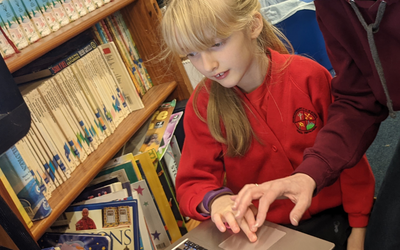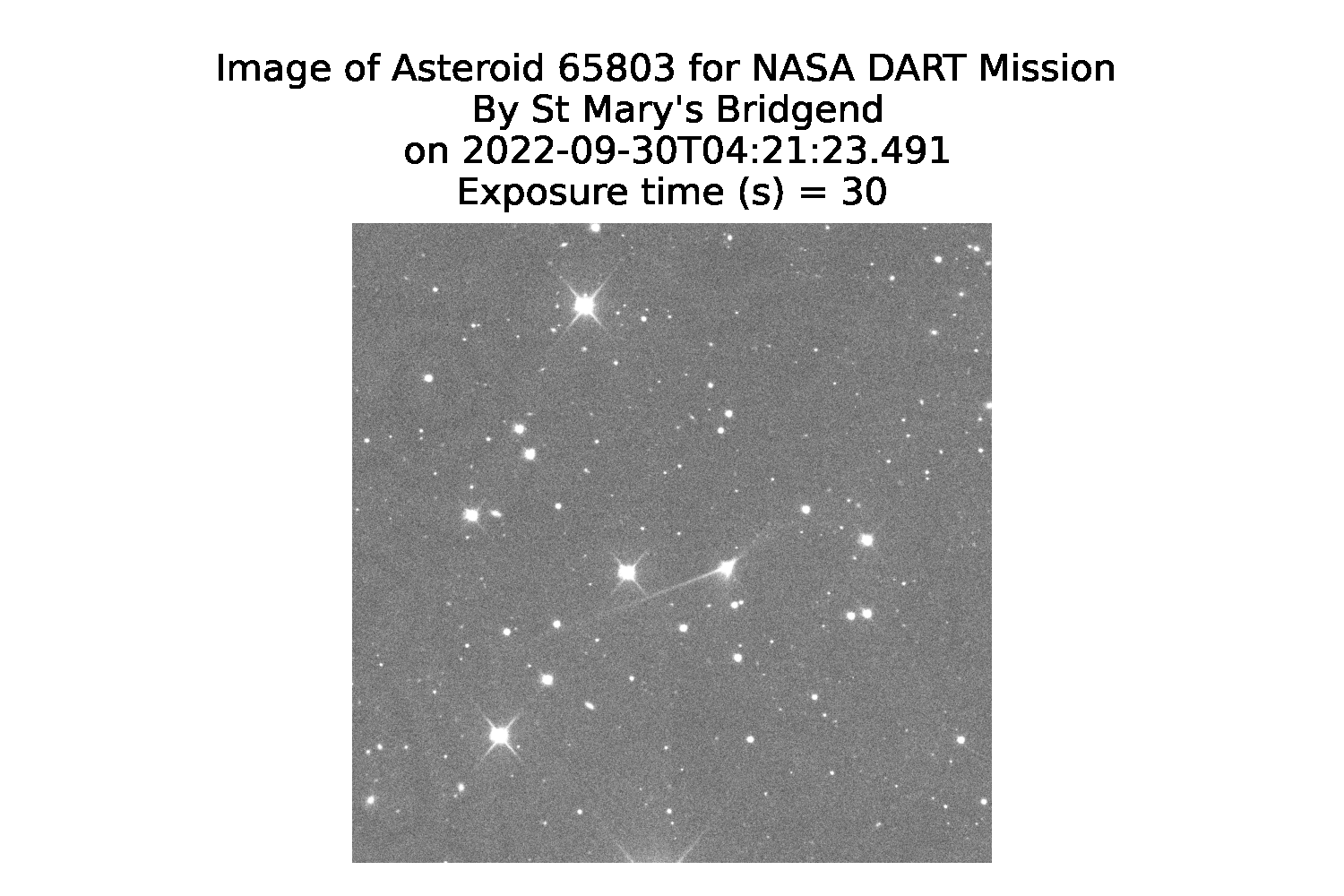You are here
- Home
- The Welsh school children helping NASA save the planet from asteroid strikes
The Welsh school children helping NASA save the planet from asteroid strikes

In Hollywood movies like Armageddon, Deep Impact, or the more recent Don’t Look Up, it is people in America who save the Earth from the disaster of an asteroid or comet impact. But now Welsh school children are getting in on the act, observing an asteroid in support of an exciting NASA mission, with the help of an Open University PhD student, and funding from the Royal Astronomical Society.
NASA and partners across the world are looking at real options for 'Planetary Defence', and they have just tested one in dramatic fashion – nudging an asteroid off course by smashing a spacecraft into it.
The DART – Double Asteroid Redirection Test – mission is targeting a double asteroid system consisting of Didymos (780m/half a mile across), and its small moon Dimorphos (160m/530 feet across).

Just after midnight on 26 September 2022, the car-sized spacecraft crashed into Dimorphos at about 6km/4 miles a second, with the aim of changing its orbit around Didymos. A small CubeSat named LICIACube, built by the Italian Space Agency, separated from DART a few weeks ago and will observe the collision from close-up.
Before the crash, it took Dimorphos just under 12 hours to complete a full orbit around Didymos. The impact will change this, and the scientists want to know by how much. That’s where observers on Earth, including Welsh schools, are going to help.
Helen Usher, an Open University PhD student based in Hengoed, south Wales, is leading the DART observing programme for the ‘Comet Chasers’ project. She thinks the schools' data will be very useful for NASA.
We are working closely with NASA partners to ensure our observations can be used as part of the larger data set to aid analyse of the results of the impact - having more data points is always good!
Helen Usher
PhD student, The Open University
Working with schools in Wales
The observing programme is part of an innovative education project called Comet Chasers, bringing real science observation into the classroom. The project team is led by researchers from The Open University and Cardiff University, working alongside educators and amateur astronomers. The project has already allowed Welsh school children to work with international researchers on several projects studying comets and asteroids. The schools have been setting up observations and gathering and analysing data. When partner researchers publish their findings, the schools are credited too. Many school children who have spoken to the team are excited about seeing their names in papers and on the web.
Pupils in Wales are making observations with large (1-meter and 2-meter) telescopes in the Las Cumbres Observatory (LCO) network from their school classrooms to help scientists accurately measure the orbit. So far children from St Mary's Catholic Primary School, Bridgend, Montgomery Church in Wales Schools, White Rose Primary School, New Tredegar, St Mary the Virgin Church in Wales School, Cardiff, and Ysgol Bro Edern, Cardiff have submitted observation requests. They were joined by Aberaeron, Brynrefail, Rhydypennau, Bodedern, and Llanerch y Medd schools who took part in the project at the National Eisteddfod in Tregaron in August. More schools will joining the programme over the coming months.
Access to these large research-grade instruments across the world (e.g. in Hawaii, Australia and South Africa) is possible through the Faulkes Telescope education project. Data from the schools in Wales will be used alongside other LCO data for detailed analysis of the effect the impact has on the double asteroid system.
Feedback from some of the pupils involved in the early stages of the DART mission observations has shown that they find the work exciting and enjoy the idea that their data is helping NASA develop its plans to protect the Earth. A Year 6 student at St Mary’s Catholic Primary School, Bridgend, commented: 'The pressure is on. This observation is for NASA! I’m working for NASA!'.
Using the data
'It’s a fantastic opportunity for schools to engage with real science, and the data provided by our partner schools across Wales will be part of the data that NASA will use to determine if their mission has been a success,' says Prof. Paul Roche of the School of Physics and Astronomy at Cardiff University. 'It’s amazing to think that the observations made by our schools will really help future plans to defend Earth from incoming asteroids.'
'The data from Welsh schools will be useful to the DART mission in studying the results of the spacecraft's impact, and particularly how the tail is changing and evolving over time,' said Tim Lister, a member of the DART mission investigation team. 'Measuring the growth of the tail length with time will help researchers understand the properties of the ejecta material,' added Matthew Knight, the team's lead on ejecta materials. 'Thus giving additional insight into the DART impact itself.'
Request your prospectus
Explore our qualifications and courses by requesting one of our prospectuses today.
News

‘I have already become more confident’ – Training programme helps develop Wales’ volunteers
A training programme established to support third-sector volunteers is now entering its second year.

New learning website launched for workers in Wales
A new website has been launched by The Open University in Wales and Wales TUC to support more people into lifelong learning.
Open University in Wales media enquiries:
Rhodri Davies
Senior Communications Manager,
Telephone: 029 2167 4532
For general OU media enquiries please contact the press office -
Telephone: 01908 654316 /
Out of office hours: 07901 515891